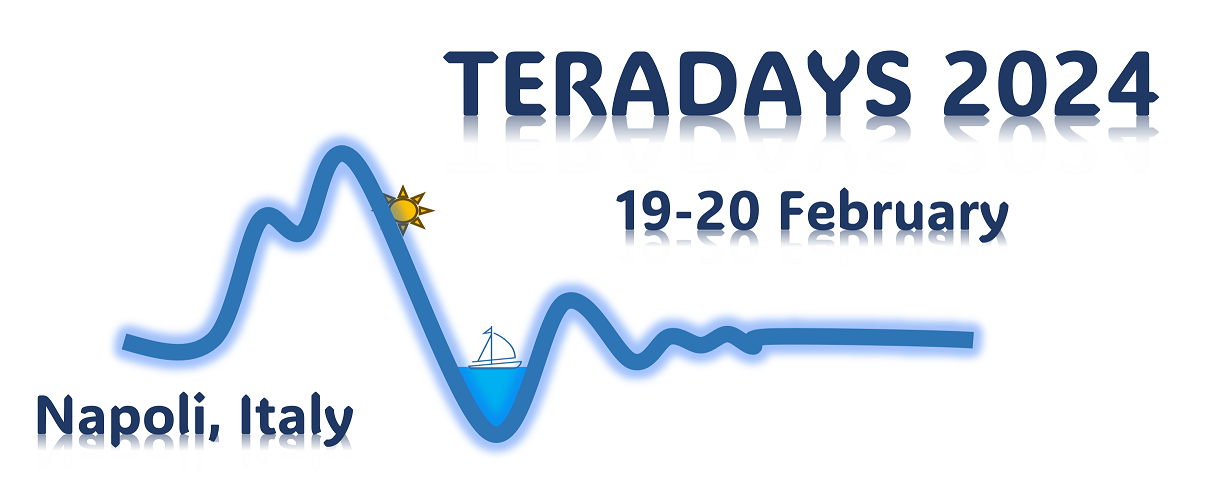Speaker
Description
Terahertz (THz) radiation exhibits properties of great interest and potential applications in several scientific fields. For example, THz waves (in the spectral range between 0.1 and 30 THz) find direct applications in spectroscopy of innovative materials, time-domain quantum optics, and biological sensing [1]. However, THz science remains challenging because of the lack of suitable sources and detectors. To fill this technological gap, various techniques have been explored over the years. For instance, quantum cascade lasers and photoconductive antennas are well-established methods to generate THz radiation [2]. Recently, frequency down-conversion of near-infrared light in nonlinear crystals emerged as a powerful alternative to more traditional methods. In particular, optical rectification schemes based on ytterbium (Yb) ultrafast lasers are now considered extremely promising [3]. Moreover, the use of an enhancement resonator able to store the infrared pulses from the Yb laser source boosts the power that can be used for optical rectification [4]. However, high-average power leads to a high thermal load for the nonlinear crystal. In addition, spatial deformation of the resonant mode can occur when the crystal is under stress inside the cavity, causing power losses and THz power drops. A crystal widely used is Gallium Phosphide (GaP) [5]. Recently, Hekmat et al. [6] published an extensive study on the behavior of this crystal when used for single pass optical rectification in the presence of high power. In this work, we propose a preliminary study in a slightly different regime of operation for GaP crystals, exploiting an enhancement resonator to achieve an average power > 300 W. This offers the chance to investigate the material properties at very high power together with the possibility of understanding the effect of GaP-induced mode deformation inside an enhancement cavity. We propose an experimental setup based on a amplified Yb fiber mode-locking laser (spectral width ~ 7 nm around 1035 nm) with a repetition rate of nearly 100 MHz, with maximum power of 60 W, and a pulse length of 370 fs. The amplified pulses are boosted to nearly 300 W using an enhancement cavity inside which optical rectification in a GaP crystal takes place. This way, modal instabilities and high-power-induced effects on GaP are observable and characterizable together with the THz generation efficiency. Even if modal instabilities partially limit the maximum gain achievable with the enhancement cavity, the comprehension of the phenomenon will soon allow the implementation of mitigation strategies to fully exploit the advantage of optical rectification in an enhancement cavity for the high repetition rate and the milliwatt level average power THz generation, opening the way to promising applications in the THz region.
Reference
[1] A. Leitenstorfer et al., “The 2023 terahertz science and technology roadmap,” J. Phys. D: Appl. Phys. 56, 22, 223001 (2023).
[2] P. U. Jepsen et al., “Terahertz spectroscopy and imaging – Modern techniques and applications,” Laser Photonics Rev. 5, 1, 124-166 (2011).
[3] J. Drs at al., “Optical rectification of ultrafast Yb lasers: pushing power and bandwidth of terahertz generation in GaP,” JOSA B 36, 11, 3039 (2019).
[4] Suerra et al. "Generation of high repetition rate THz radiation at the millwatt-level via optical rectification in an enhancement cavity," EPJ Web of Conferences, 08021 (2023).
[5] J. Li et al., “Generation of 0.3 mW high-power broadband terahertz pulses from GaP crystal pumped by negatively chirped femtosecond laser pulses,” Laser Phys. Lett. 10, 125404 (2013).

